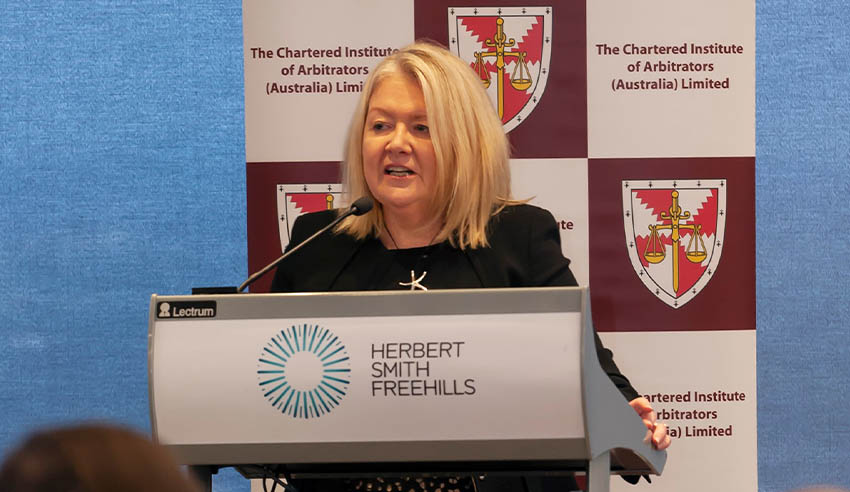There is a need to avoid over-regulation, as well as an imperative to focus more heavily on diversity, if arbitration is to remain fit for purpose, argues one practitioner.

Speaking earlier this week at the Chartered Institute of Arbitrators Annual Lecture, hosted at the Herbert Smith Freehills Brisbane office, HSF head of global arbitration and London Court of International Arbitration president Paula Hodges QC said international arbitration appears “to be a success story given the growth in user demand”.
In her lecture titled, “The Continuing Evolution of International Commercial Arbitration – Is It Still Fit for Purpose?”, Ms Hodges said there was a preference for arbitration over other methods of dispute resolution due to the enforceability of awards, flexibility, and the ability to avoid specific legal systems or national courts.
But costs, a lack of effective sanctions and a lack of power in relation to third parties were ongoing criticisms, she noted.
“There is a considerable tension between the inherent flexibility and adaptability of arbitration and the efforts to drive even greater regulation and structure around the arbitral process,” she argued.
“It is critical that we avoid the ‘over-regulation’ of arbitration, leaving enough to the discretion of parties and tribunals to tailor the right procedure for the parties and the dispute."
Moreover, Ms Hodges said that a “key part of the challenge” of ensuring that arbitration can remain “fit for purpose” is focusing more heavily on diversity.
“Gender diversity has rightfully received focus, but we also have to address regional and ethnic imbalance within the arbitration community,” she argued.
“The efforts of the arbitral institutions are helping to bridge the gap, but it is down to counsel and the parties themselves to make diverse tribunals a reality.”
Any consideration of the future evolution of arbitration, Ms Hodges also submitted, must also include new technologies.
Existing technological advancements had changed the face of arbitration, she mused, but with the advent of new technologies such as “augmented reality” and blockchain, arbitrators and practitioners need to upskill.
“We are already realising huge potential in this area in limiting the scope of document review, in the presentation of evidence and in ensuring the security of the documents that we share in an arbitration,” she said.
“There is more technological change to come, and we can categorically predict that we will need to upskill.
“The story of international arbitration is one of development, adaption and change, and gender diversity and technological advances will play a vital role in the chapters to come.”

Jerome Doraisamy is the managing editor of professional services (including Lawyers Weekly, HR Leader, Accountants Daily, and Accounting Times). He is also the author of The Wellness Doctrines book series, an admitted solicitor in New South Wales, and a board director of the Minds Count Foundation.
You can email Jerome at: